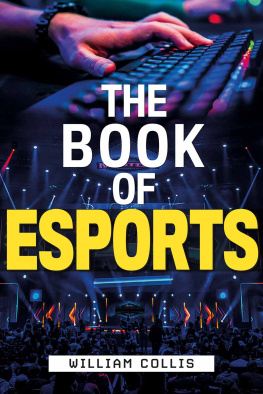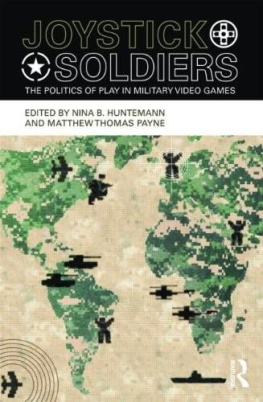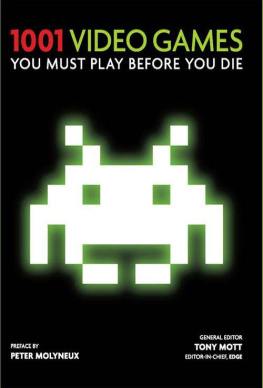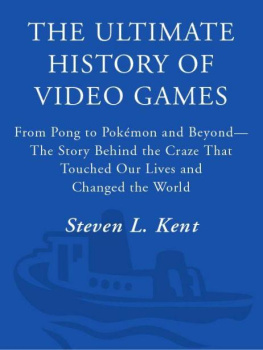INTRODUCTION
The Two Johns
T here were two games. One was played in life. The other was lived in play. Naturally these worlds collided, and so did the Two Johns, It happened one afternoon in April 2000 in the bowels of downtown Dallas. The occasion was a $100,000 prize tournament of the computer game Quake III Arena. Hosted by the Cyberathlete Professional League, an organization that hoped to become the NFL at the medium, the gathering was BYOC bring your own computer. Hundreds of machines were networked together in the basement of the Hyatt hotel for seventy-two hours of nonstop action.
On a large video screen that displayed the games being played, rockets soared across digital arenas. Cigar-chomping space marines, busty dominatrix warriors, maniacal bloodstained clowns, hunted each other with rocket launchers and plasma guns. The object was simple: The player with the most kills wins.
The gamers at the event were as hard-core as they came. More than one thousand had road-tripped from as far as Florida and even Finland with their monitors, keyboards, and mice. They competed until they passed out at their computers or crawled under their tables to sleep on pizza box pillows. A proud couple carried a newborn baby in homemade Quake pajamas. Two jocks paraded with their hair freshly shaved into the shape of Quakes clawlike logo; their girlfriends made their way around the convention hall brandishing razors for anyone else who wanted the ultimate in devotional trims.
Such passion was hardly uncommon in Dallas, the capital of ultraviolent games like Quake and Doom. Paintball-like contests played from a first-person point of view, the games have pioneered a genre known as first
shooters. They are among the bestselling franchises in this $10.8 billion industry and a sizable reason why Americans spend more money on video games than on movie tickets. They have driven the evolution of computing, pushing the edge of 3-D graphics and forging a standard for online play and community. They have created enough sociopolitical heat to get banned in some countries and, in the United States, blamed for inciting a killing spree by two fans at Columbine High School in 1999.
As a result, they have spawned their own unique outlaw community, a high-stakes, high-tech mecca for skilled and driven young gamers. In this world, no gamers were more skilled and driven than the cocreators of Doom and Quake, John Carmack and John Romero, or, as they were known, the Two Johns.
For a new generation, Carmack and Romero personified an American dream: they were self-made individuals who had transformed their personal passions into a big business, a new art form, and a cultural phenomenon.
Their story made them the unlikeliest of antiheroes, esteemed by both Fortune 500 executives and computer hackers alike, and heralded as the Lennon and McCartney of video games (though they probably preferred being compared to Metallica). The Two Johns had escaped the broken homes of their youth to make some of the most influential games in history, until the very games they made tore them apart. Now in minutes, years after they had split, they were coming back together before their fans.
Carmack and Romero had each agreed to speak to their minions about their latest projects: Carmacks Quake III Arena, which hed programmed at the company they cofounded, id Software, and Romeros Daikatana, the long-awaited epic he had been developing at his new and competing start-up, Ion Storm. The games embodied the polar differences that had once made the Two Johns such a dynamic duo and now made them seemingly inseparable rivals. Their relationship was a study of human alchemy.
The twenty-nine-year-old Carmack was a monkish and philanthropic programmer who built high-powered rockets in his spare time (and made Bill Gatess short list of geniuses); his game and life aspired to the elegant discipline of computer code. The thirty-two-year-old Romero was a brash designer whose bad-boy image made him the industrys rock star; he would risk everything, including his reputation, to realize his wildest visions. As Carmack put it shortly after their breakup: Romero wants an empire, I just want to create good programs.
When the hour of the Two Johns arrival at the hotel Finally approached, the gamers turned their attention from the skirmish on screen to the real-life one between the ex-partners. Out in the parking lot, Carmack and Romero pulled up one shortly after the other in the Ferraris they had bought together at the height of their collaboration. Carmack walked quickly past the crowd; he had short, sandy blond hair, square glasses, and a T-shirt of a walking hairball with two big eyes and legs. Romero sauntered in with his girlfriend, the sharpshooting gamer and Playboy model Stevie Case; he wore tight black jeans and matching shirt, and his infamous dark mane hung down near his waist. As they passed each other in the hall, the Two Johns nodded obligatorily, then continued to their posts.
It was time for this game to begin.
ONE
The Rock Star
E leven-year-old John Romero jumped onto his dirt bike, heading for trouble again. A scrawny kid with thick glasses, he pedaled past the modest homes of Rocklin, California, to the Roundtable Pizza Parlor.
He knew he wasnt supposed to be going there this summer afternoon in 1979, but he couldnt help himself. That was where the games were.
Specifically, what was there was Asteroids, or, as Romero put it, the coolest game planet Earth has ever seen! There was nothing like the feeling he got tapping the control buttons as the rocks hurled toward his triangular ship and the Jaws-style theme music blipped in suspense, dum dum dum dum dum dum ; Romero mimicked these video game sounds the way other kids did celebrities. Fun like this was worth risking everything: the crush of the meteors, the theft of the paper route money, the wrath of his stepfather. Because no matter what Romero suffered, he could always escape back into the games.
At the moment, what he expected to suffer was a legendary whipping.
His stepfather, John Schunemana former drill sergeanthad commanded Romero to steer clear of arcades. Arcades bred games. Games bred delinquents. Delinquency bred failure in school and in life.
As his stepfather was fond of reminding him, his mother had enough problems trying to provide for Romero and his, younger brother, Ralph, since her first husband left the family five years earlier. His stepfather was under stress of his own with a top-secret government job retrieving black boxes of classified information from downed U.S. spy planes across the world. Hey, little man, he had said just a few days before, consider yourself warned.
Romero did heed the warningsort of. He usually played games at Timothys, a little pizza joint in town; this time he and his friends headed into a less traveled spot, the Roundtable. He still had his initials, AJR for his full name, Alfonso John Romero, next to the high score here, just like he did on all the Asteroids machines in town. He didnt have only the number-one score, he owned the entire top ten. Watch this, Romero told his friends, as he slipped in the quarter and started to play.
The action didnt last long. As he was about to complete a round, he felt a heavy palm grip his shoulder. What the fuck, dude? he said, assuming one of his friends was trying to spoil his game. Then his face smashed into the machine.
Romeros stepfather dragged him past his friends to his pickup truck, throwing the dirt bike in the back. Romero had done a poor job of hiding his bike, and his stepfather had seen it while driving home from work. You really screwed up this time, little man, his stepfather said. He led Romero into the house, where Romeros mother and his visiting grandmother stood in the kitchen. Johnny was at the arcade again, his stepfather said. You know what thats like? Thats like telling your mother Fuck you.
Next page
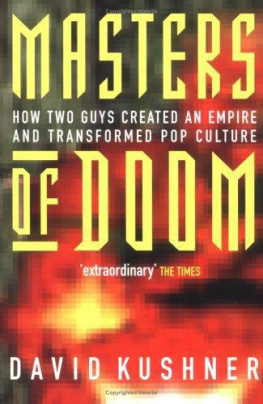
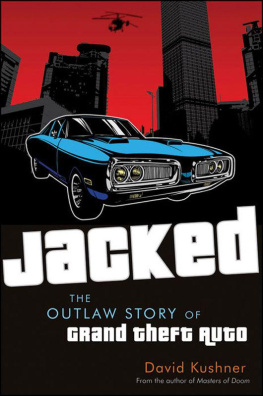


![Mark J. P. Wolf (editor) - Encyclopedia of Video Games: The Culture, Technology, and Art of Gaming [3 volumes]](/uploads/posts/book/279290/thumbs/mark-j-p-wolf-editor-encyclopedia-of-video.jpg)
